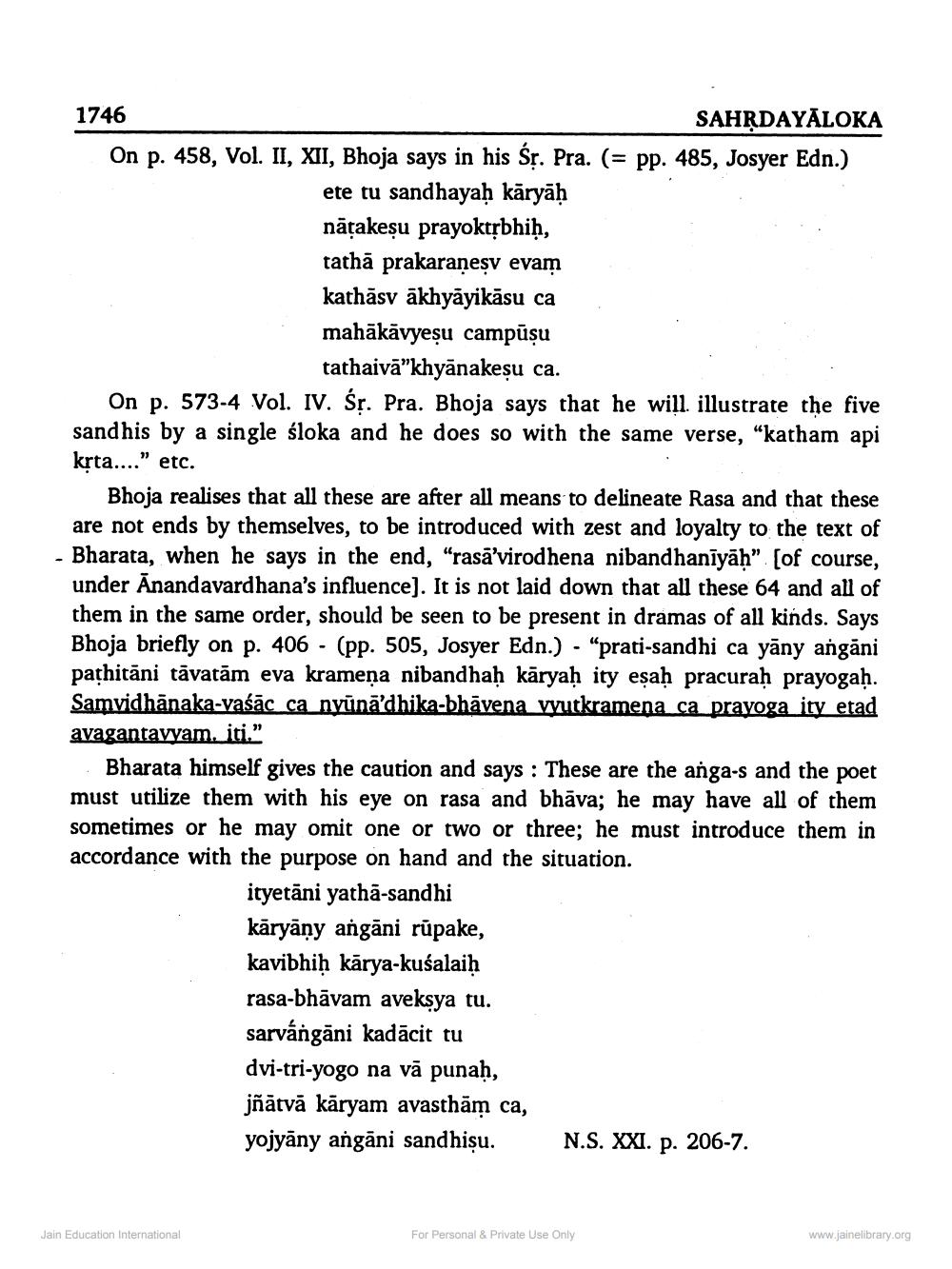________________
1746
SAHRDAYĀLOKA On p. 458, Vol. II, XII, Bhoja says in his Śr. Pra. (= pp. 485, Josyer Edn.)
ete tu sandhayaḥ kāryāḥ nāțakeșu prayoktpbhiḥ, tathā prakaraneșv evam kathāsv ākhyāyikāsu ca mahākāvyesu campūșu
tathaivā”khyānakesu ca. On p. 573-4 Vol. IV. Śr. Pra. Bhoja says that he will. illustrate the five sandhis by a single sloka and he does so with the same ve krta...." etc.
Bhoja realises that all these are after all means to delineate Rasa and that these are not ends by themselves, to be introduced with zest and loyalty to the text of - Bharata, when he says in the end, “rasā’virodhena nibandhanīyāḥ” (of course,
under Anandavardhana's influence). It is not laid down that all these 64 and all of them in the same order, should be seen to be present in dramas of all kinds. Says Bhoja briefly on p. 406 - (pp. 505, Josyer Edn.) - “prati-sandhi ca yāny angāni pathitāni tāvarām eva kramena nibandhah kāryah ity esah pracurah prayogah. Samvidhānaka-vaśāc ca nyūna'dhika-bhāvena vyutkramena ca prayoga ity etad avagantavam. iti."
Bharata himself gives the caution and says : These are the anga-s and the poet must utilize them with his eye on rasa and bhāva; he may have all of them sometimes or he may omit one or two or three; he must introduce them in accordance with the purpose on hand and the situation.
ityetāni yathā-sandhi kāryāṇy angāni rūpake, kavibhiḥ kārya-kušalaih rasa-bhāvam aveksya tu. sarvangāni kadācit tu dvi-tri-yogo na vā punaḥ, jñātvā kāryam avasthām ca, yojyāny angāni sandhișu. N.S. XXI. p. 206-7.
Jain Education International
For Personal & Private Use Only
www.jainelibrary.org




